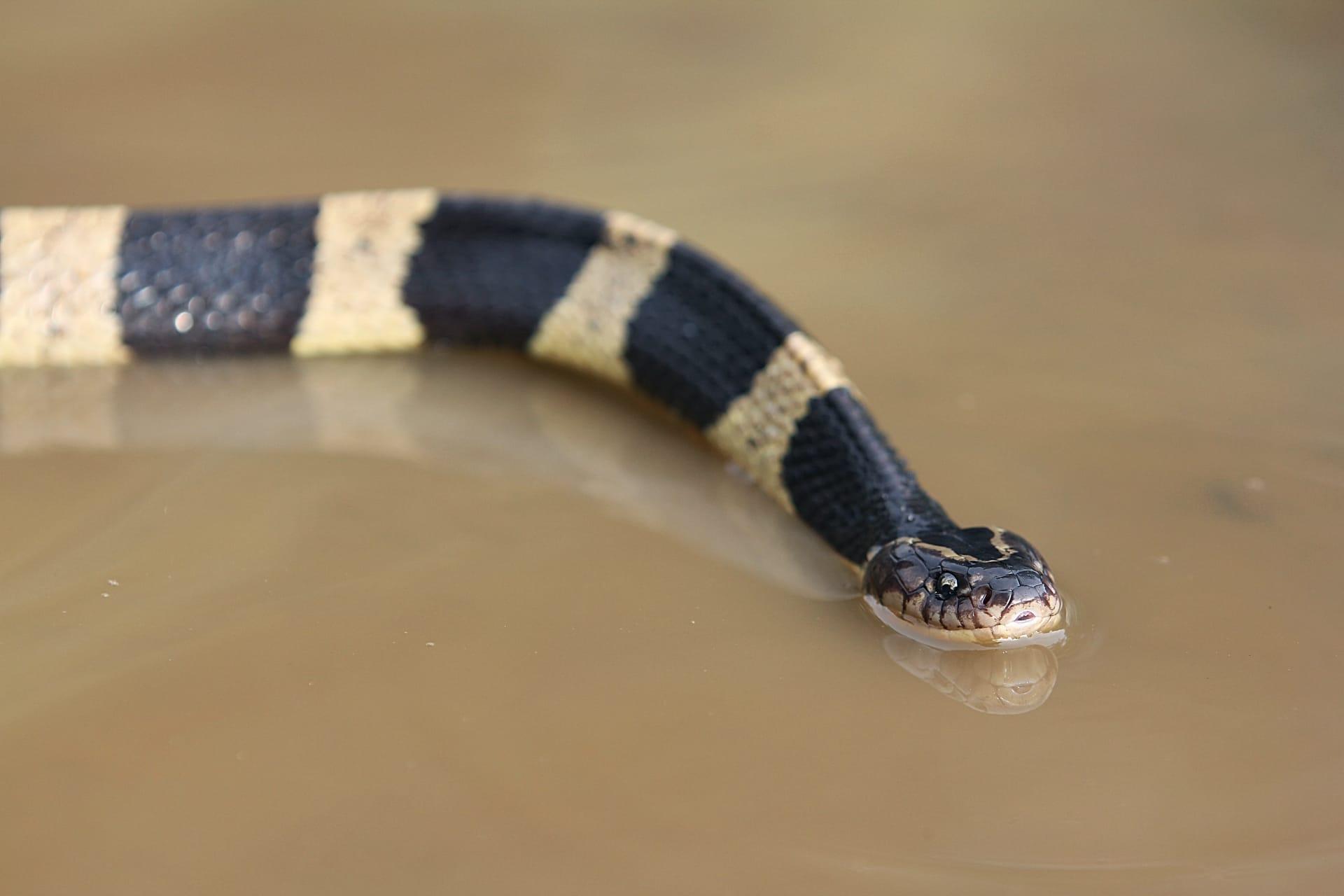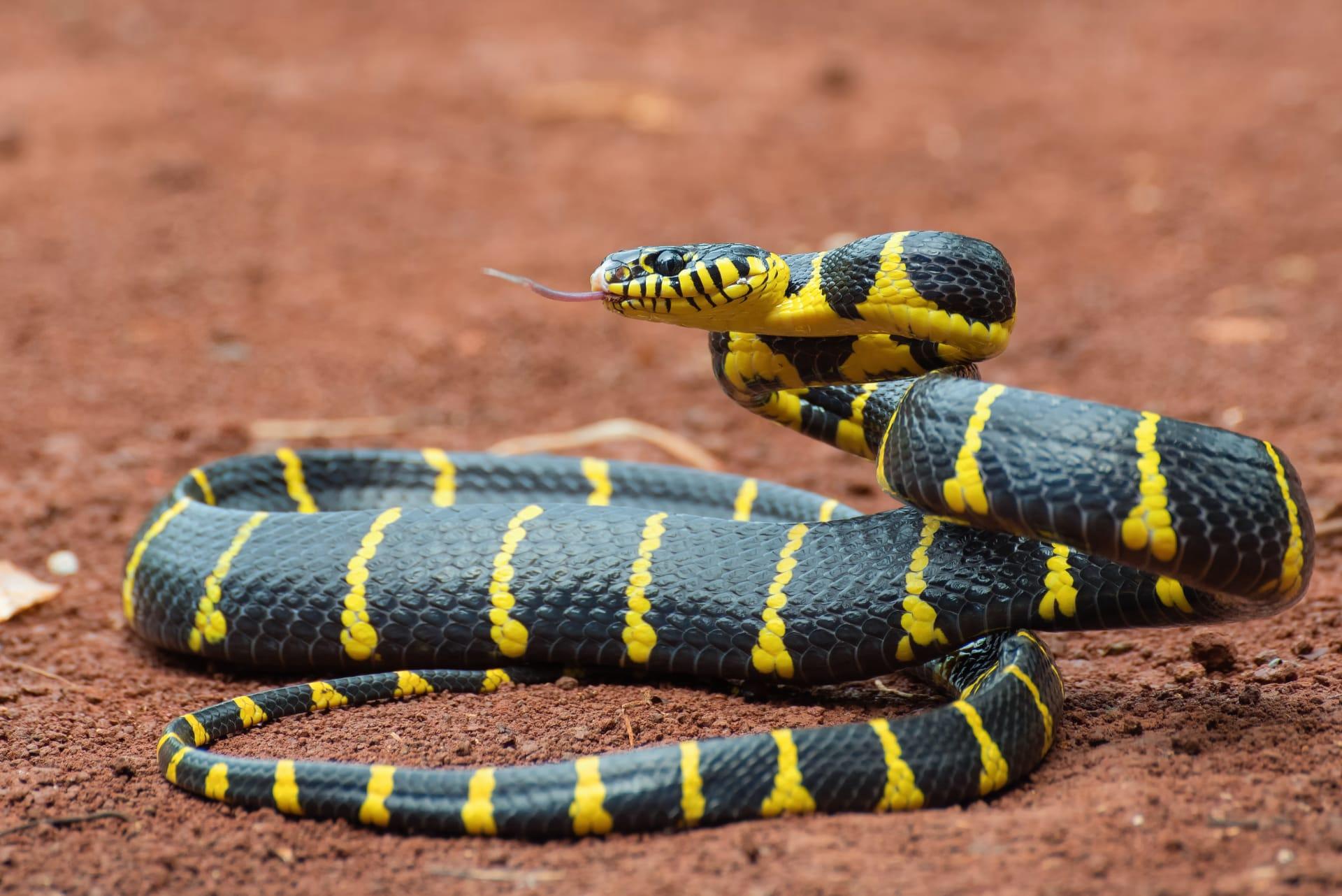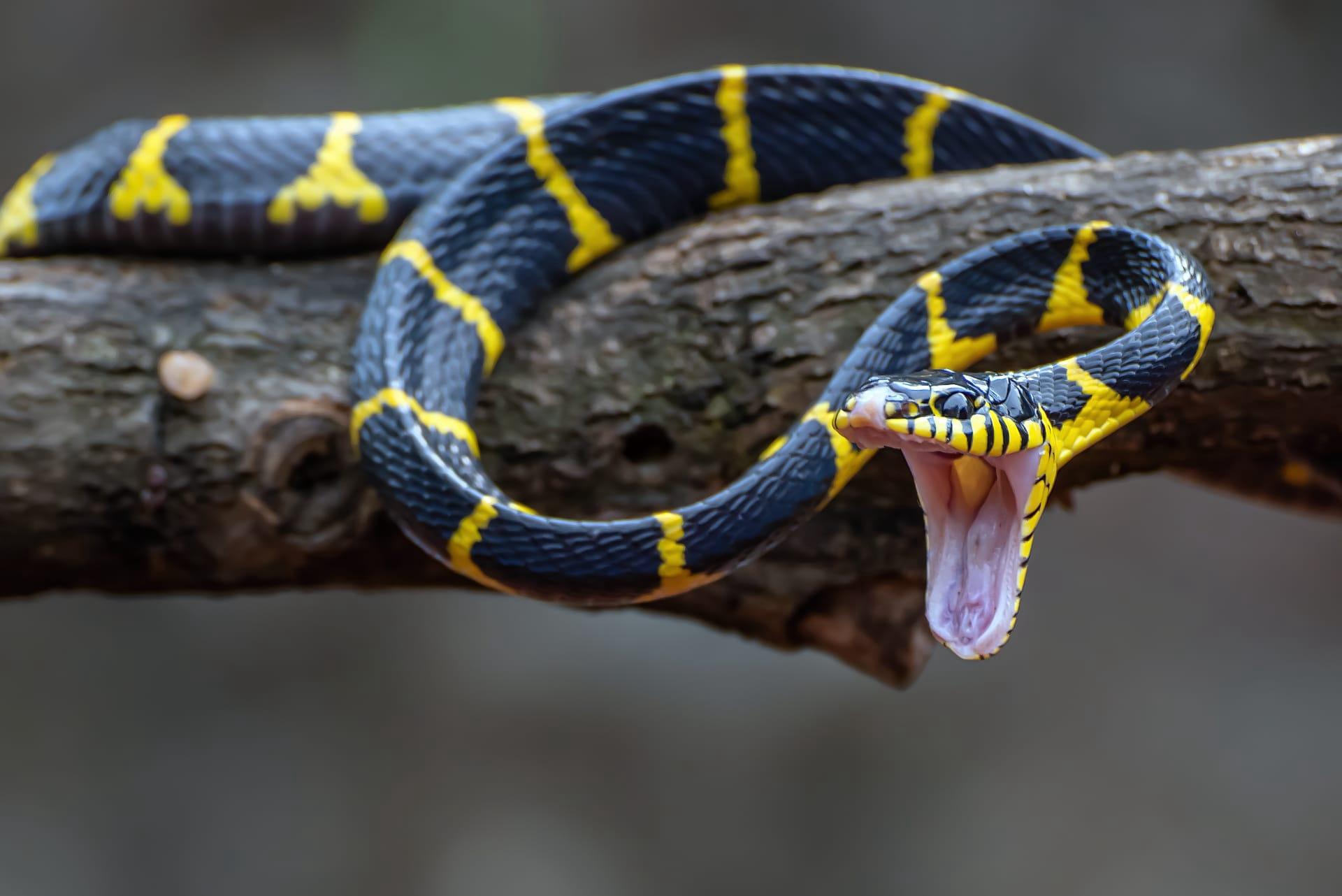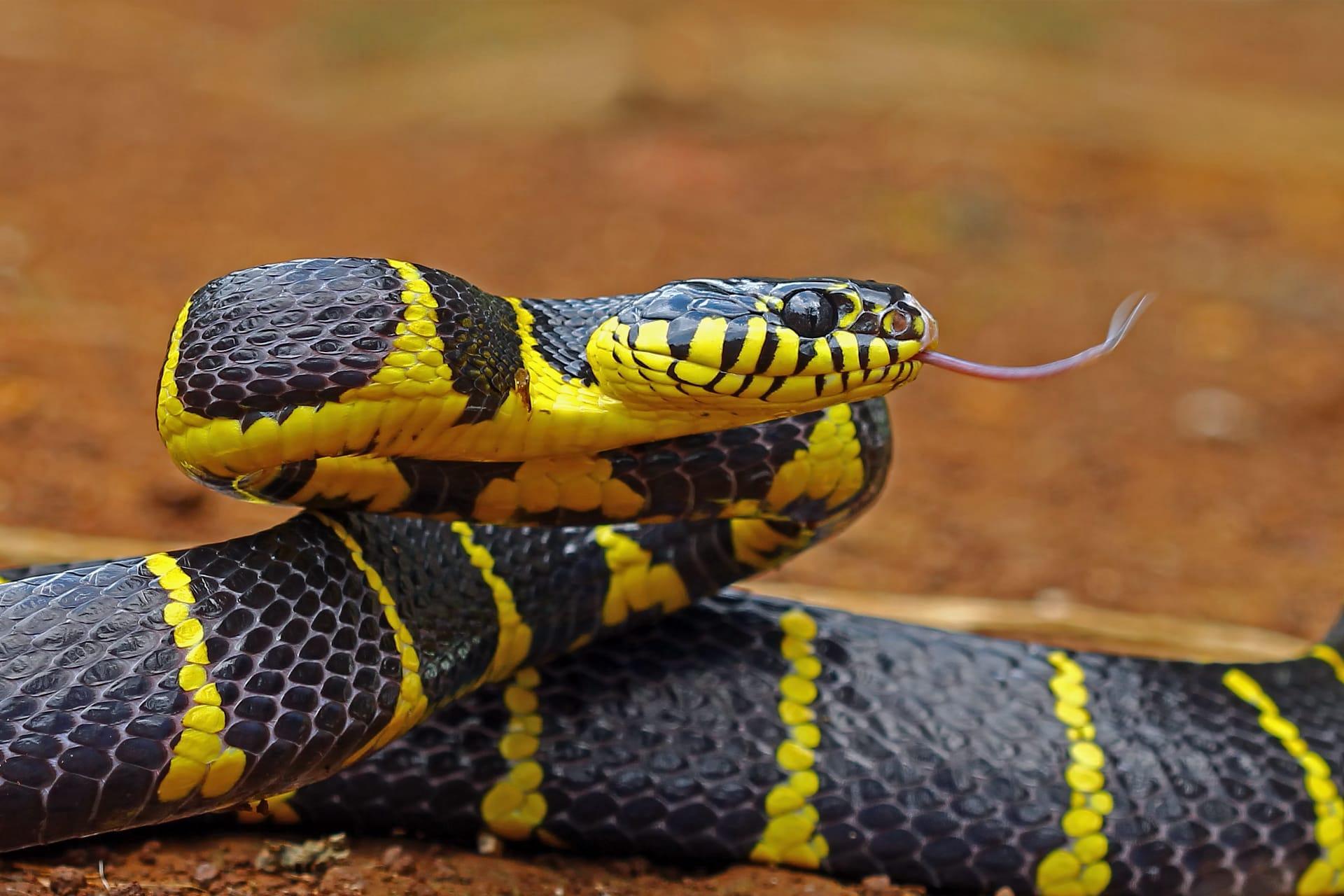Banded Krait
- Home /
- Mini Encyclopedia /
- Animal /
- Banded Krait
1
The Banded Krait, scientifically named Bungarus fasciatus, belongs to the family Elapidae, which is known for its highly venomous members. This species is distinct with its alternating black and yellow bands, and its triangular cross-section body shape. The Banded Krait can grow up to 2 meters in length, though the average is usually around 1.5 meters. Their eyes are characteristic, being relatively small with rounded pupils, which is a common trait in nocturnal snakes.
Regarding its distribution, the Banded Krait is predominantly found in South and Southeast Asia. Its habitat range covers countries like India, Bangladesh, Pakistan, Nepal, Sri Lanka, Thailand, Vietnam, Malaysia, Indonesia, and the southern part of China. Preferring wet environments, these snakes are often located near water sources such as rice fields, swamps, and ponds. They are predominantly terrestrial but can occasionally be found in trees and bushes. The Banded Krait's range in elevation varies, but they are commonly found at lower altitudes, usually not exceeding 1000 meters above sea level.

2
Question: Do Banded Kraits only attack humans in self-defense, or are they aggressive hunters?
Answer: Contrary to popular belief, the Banded Krait is generally not aggressive towards humans and tends to be shy and reclusive. These snakes are primarily nocturnal and avoid confrontations during the day. Most human encounters leading to bites are accidental, often because someone has stepped on or provoked the snake. The Banded Krait's venom is highly potent, primarily neurotoxic, which can cause muscle paralysis and respiratory failure in severe cases. However, this snake is less likely to bite unless severely threatened, and instances of human fatalities are rare, primarily due to the snake's non-aggressive nature.

3
The Banded Krait employs several survival strategies that make it a successful species in its environment. One key strategy is its nocturnal lifestyle, which reduces the likelihood of encountering predators that are active during the day. Their distinct banded pattern provides excellent camouflage in grassy or wooded areas, helping them to blend in and avoid detection.
When it comes to hunting, Banded Kraits use their potent venom to subdue prey, which primarily consists of other snakes, including other venomous species. They also feed on small mammals, lizards, and frogs. Their hunting method usually involves delivering a venomous bite and then waiting for the prey to succumb to the venom before consuming it. This strategy minimizes the risk of injury to the snake from its prey.

4
In the ecosystem, the Banded Krait plays a significant role as both predator and prey. As a predator, it helps to control the population of its prey species, which includes other snakes, rodents, and amphibians. This control is crucial in maintaining a balanced ecosystem. Their presence in agricultural areas can be beneficial in controlling rodent populations, which can be pests to crops.
As prey, the Banded Krait is a food source for larger predators, including birds of prey and larger mammals. This predator-prey relationship is essential for the natural food chain and helps to maintain ecological balance. Additionally, the Banded Krait, like many other snake species, is an indicator of environmental health. A healthy population of these snakes suggests a balanced and thriving ecosystem in their habitat.

5
Film: "Venom Islands," produced in the United States in 2018, is a fascinating documentary that explores the lives of venomous snakes, including the Banded Krait. The film showcases their habitats across Asia, delving into their behavior, survival strategies, and interactions with other species. It provides viewers with a captivating insight into the secretive world of these snakes.
Book: "Snakes of Asia," authored by John C. Murphy and published in the United Kingdom in 2020, is an extensive guide covering various Asian snake species, including the Banded Krait. The book offers detailed descriptions, habitat information, and high-quality photographs, making it a valuable resource for herpetologists and snake enthusiasts.
Book: "Venomous Snakes of Asia," written by Gerrard Tyson in Australia in 2022, provides an in-depth look at the Banded Krait and other venomous snakes of the region. The book focuses on their biology, venom properties, and the ecological significance of these reptiles. It serves as an excellent educational tool for understanding the complex nature of these often-misunderstood creatures.